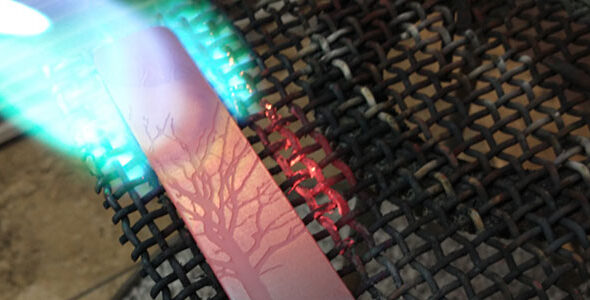
If you’ve been following my metalsmithing journey, you’ve probably heard me mention “firescale” and “pickle.” Before your imagination conjures up a dragon-themed picnic, let’s explore these intriguing terms from the world of metalsmithing.
What is Firescale?
Firescale, also known as firestain, isn’t a mystical mark from a dragon’s breath—it’s a common effect in metalwork. When metals, especially those with copper alloys like silver or gold, are heated, they develop a black layer of oxides on the surface. That’s what we call firescale. It’s almost like a patina, a sign of the heat and transformation the metal has undergone.
For those of us working with copper-based metals, like sterling silver, firescale shows up in shades of red or purple. It’s the result of oxygen reacting with the copper as it’s heated. These oxides—cuprous and cupric—disrupt the smooth finish and add character to the metal, telling a story of its journey through fire.
Annealing: A Gentle Touch of Heat
While copper has a natural malleability, the thicker metals I work with require a little help. That’s where annealing comes in. This heat treatment softens the metal, allowing it to be shaped more easily on the mandrel. By applying heat with an acetylene torch, I can give my jewelry pieces the flexibility they need for shaping.
Battling Firescale
Now, let’s talk about dealing with firescale. While it may feel like an unwanted guest, it can be removed with some careful techniques. Polishing, sanding, grinding, filing, and wire brushing all help coax firescale away. Since firescale is relatively shallow, with some patience and effort, it can be effectively eliminated. However, this comes with a trade-off: some material loss does occur.
If you want to dive deeper into my techniques for combating firescale, check out my post titled Banish Firescale: The Power of Pickle in Metalsmithing for insights into how I tackle this fiery foe.
Visual Transformation
Below, you’ll find images showcasing copper’s transformation under the influence of firescale. This process illustrates how oxidation alters the metal’s appearance, shifting it from its natural hue to a dark shade. You can observe how the metal turns red with the torch’s heat, revealing the black firescale as it cools.
So, when you see firescale and pickle in my demonstration videos, know that you’re witnessing the heart of metalsmithing’s intricate dance. Fire and metal intertwine to craft stories of transformation and triumph. While dragons might not be involved, the magic is just as real.


